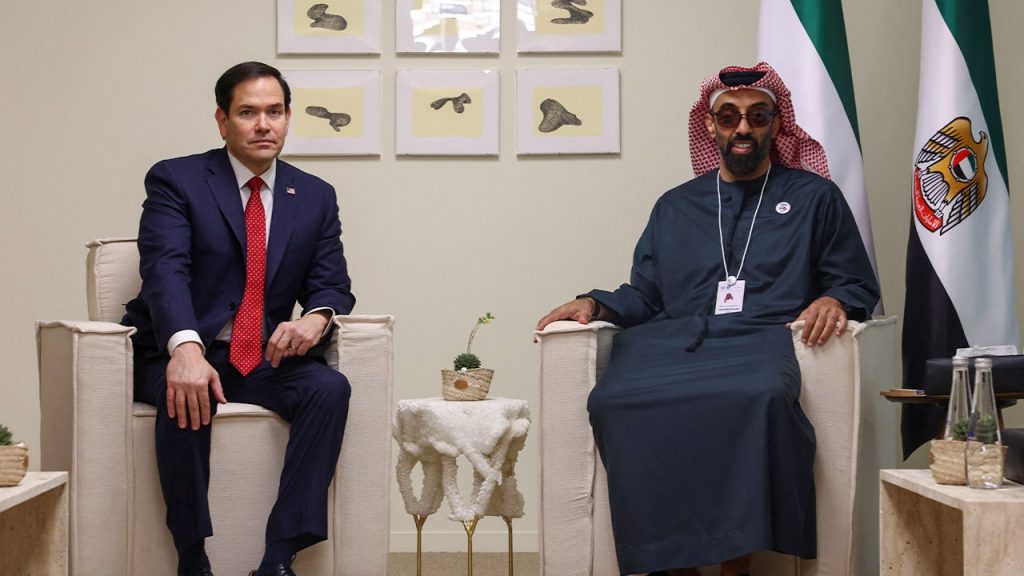In a significant move aimed at strengthening economic ties, the United Arab Emirates (UAE) has committed to a 10-year, $1.4 trillion investment framework with the United States. This announcement was made by the White House, emphasizing that these investments will target various sectors including artificial intelligence, semiconductors, and energy. The framework emerged from discussions held between President Donald Trump and UAE National Security Advisor HH Sheikh Tahnoon bin Zayed Al Nahyan in Washington, D.C.
| Article Subheadings |
|---|
| 1) Overview of the Investment Framework |
| 2) Key Areas of Investment |
| 3) Significance of U.S.-UAE Relations |
| 4) Implications for American Industries |
| 5) Future Prospects and Challenges |
Overview of the Investment Framework
The recently announced investment framework marks a pivotal advancement in U.S.-UAE relations, signaling a long-term commitment between the two nations. During a meeting at the Oval Office, President Donald Trump welcomed Sheikh Tahnoon bin Zayed Al Nahyan, the National Security Advisor of the UAE. Their discussions centered around enhancing the existing economic partnership through substantial investments projected to reach $1.4 trillion over the next decade. Sheikh Tahnoon expressed gratitude for Trump’s hospitality and affirmed the UAE’s dedication to fostering deeper economic ties with the U.S.
The framework incentivizes various sectors to attract investment, with both nations poised to reap significant benefits. Notably, this commitment is not merely an economic transaction; it reflects a deeper geopolitical strategy as both countries align their interests to bolster economic resilience and political partnerships.
Key Areas of Investment
The investment framework encompasses several key sectors that align with the UAE’s strategic interests. Investments are planned in artificial intelligence, infrastructure, energy, and healthcare, among others, which are vital for sustainable growth. The involvement of major players like Abu Dhabi-based MGX, BlackRock, Microsoft, and NVIDIA indicates a robust push towards embracing technology and innovation. Collectively, these companies are expected to mobilize up to $100 billion to enhance U.S. AI leadership.
Furthermore, Emirates Global Aluminum has agreed to invest in the construction of America’s first new aluminum smelter in 35 years, a project that highlights the UAE’s commitment to expanding its footprint in critical manufacturing sectors. This diversification strategy aligns with global trends as nations ramp up their technological capabilities and infrastructure development in response to changing economic landscapes.
Significance of U.S.-UAE Relations
The close ties between the U.S. and the UAE have historical significance, founded on mutual interests in trade, technology, and security cooperation. This latest investment framework emphasizes that relationship, underscoring the strategic partnership fostered by both leaders. The White House noted that the collaboration between President Trump and President Sheikh Mohamed of the UAE is pivotal in navigating complex global challenges. This includes confronting shared issues such as regional security in the Middle East and economic stability amid shifting global dynamics.
The recent meetings in Washington facilitated further discussions about enhancing cooperation, demonstrating a renewed commitment by the UAE to strengthen its strategic position as an economic ally of the U.S. This partnership not only boosts economic ties but also reinforces diplomatic channels pivotal in addressing regional conflicts and challenges.
Implications for American Industries
The significant financial inflow anticipated from the UAE will have profound implications for various American industries. Key sectors such as technology, energy, and manufacturing stand to benefit immensely from this investment. The planned investments in AI and advanced technologies will enhance the U.S.’s competitive edge in these vital fields, fostering innovation and job creation domestically.
Moreover, the collaboration between tech giants and sovereign wealth in supporting America’s technological infrastructure is expected to catalyze further investments from other nations, thereby reinforcing the U.S. economy. Enhanced capabilities in industries such as semiconductors and energy will be crucial for the U.S., especially in the context of global technological competition.
Future Prospects and Challenges
As both nations embark on this ambitious investment journey, challenges remain on the horizon. Geopolitical tensions and the evolving economic landscape could pose risks to the sustained success of this investment framework. Additionally, regulatory hurdles within the U.S. and potential pushback from domestic industries wary of foreign investment may arise.
However, the commitment from both nations reflects a strong belief in the benefits this partnership can provide. Strategies to address public concerns and ensure transparency will be crucial in fostering support for such ventures. Overall, the long-term outlook appears promising as both the U.S. and UAE aim to leverage their mutual strengths in a rapidly changing global environment.
| No. | Key Points |
|---|---|
| 1 | UAE commits to a 10-year, $1.4 trillion investment framework with the U.S. |
| 2 | Investments will focus on sectors like AI, semiconductors, and energy. |
| 3 | Reinforces the historical ties and strategic partnership between the U.S. and the UAE. |
| 4 | Expected benefits include job creation and technological advancements in America. |
| 5 | Potential challenges include geopolitical tensions and regulatory hurdles in the U.S. |
Summary
The $1.4 trillion investment framework between the UAE and the United States reflects a strategic commitment to strengthening economic ties and cooperation across critical sectors. With a focus on innovation and technology, this initiative aims to foster job creation and enhance U.S. global competitiveness. As both nations navigate the intricacies of this partnership, addressing potential challenges will be essential to realizing the framework’s full potential.
Frequently Asked Questions
Question: What is the primary focus of the UAE’s investment in the U.S.?
The primary focus includes investments in artificial intelligence, semiconductors, energy, and manufacturing, aimed at enhancing U.S. technological capabilities.
Question: How will this investment framework impact American industries?
It is expected to boost job creation, foster innovation, and enhance the competitive edge of American industries, particularly in technology and manufacturing.
Question: What challenges may arise from this investment agreement?
Challenges may include geopolitical tensions, public concern over foreign investments, and regulatory hurdles within the U.S. that could affect the efficacy of the partnership.


